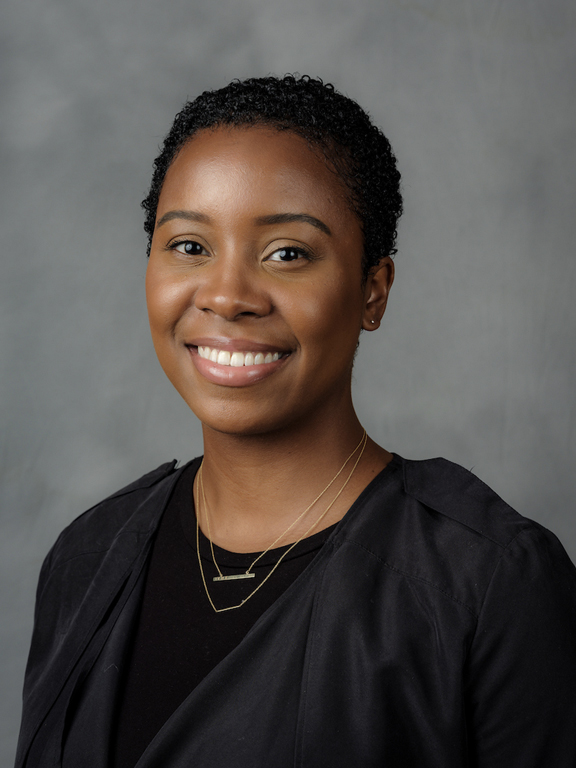Digital Storytelling & The Cultural Artifact

Dr. Alisha J. Hines
Course: HST 110 The History of the Atlantic World since 1500
Number of Students: 25
Term: Fall 2018
Duration: 15 weeks
Designer: Brianna Derr, Manager of Advanced Learning Projects
Question
Why did you incorporate a digital component into your curriculum?
Answer
“I saw an opportunity with the Atlantic world course. It seemed like the themes and this focus on storytelling lent itself to a digital project and so, I think it can be built out from there to do a lot of different things. I think it’s a really interesting way of learning and engaging students to learn and articulate their ideas and ask different questions and also produce knowledge. Knowledge doesn’t always have to look like an essay or an exam but they can have the power. I think there is a lot of power with Digital Humanities, in using digital tools, and so sort of giving them that comfort and security in expressing whatever they want and creating whatever knowledge they wanted was something I really wanted to explore.”
Project Description
Cultural Artifact Project
Choose an artifact from your life, something that is meaningful to you and that has shaped or is representative of your identity in some way. It should be an artifact that you can expand on and use to drive an analytical essay based on major themes of the course (race, ethnicity, religion, cultural exchange, capitalism, history, and storytelling, globalization, modernity, etc). The artifact may be a physical object but it can also be a film, book, music, piece of art, or something else.
You will be asked to produce a digital story (50% of final grade), in which you will present the artifact using images, video (possibly other digitally-born resources), and your own narration. The second component of this assignment will be your “deep.” Brianna Derr, Manager of Advanced Learning Projects (Office of Academic Technology) will work with us as a class to produce this digital output. Please refer to the weekly schedule to see when she will attend and when elements of this assignment are due. In general, you will be asked to write a ~300 word narrative that will accompany the visuals you will you use for the digital essay.
The second component of this project, the “Deep” (50% of final grade) will take the form of a 5-7 page paper in which you go deep into the meaning of your artifact. You will historicize the object and interpret its significance based on the content and ideas you have engaged over the course of the semester, and using relevant secondary sources from the syllabus or those you find using the library website. If you find your artifact to be too specific or limiting, you may expand out from it and think about the genre of the artifact in a general sense (for example, if you chose a particular religious artifact that resonates with you, you could talk about the role of religion and religious practices among a particular group of people in the Atlantic World).
To find some inspiration for your “Deep” see: https://sites.duke.edu/blackatlantic/
The digital story is a personal, storytelling project, where you represent the meaning of the artifact to you, how it fits within the story of you. The deep will be more analytical and based on your knowledge of and critical interpretation of the scholarly literature and primary documents that we have engaged in class or those that you find through your own research. Through the deep, you will instead ask where does your artifact sit in the story (or stories) of the Atlantic World?
Purpose
The purpose of this assignment was to have students connect broad course themes to their own personal life stories and situate their identities, subjectivities, and personal backgrounds in a larger historical narrative.
Learning Goals
Digital literacy—Adobe Premiere Pro, iMovie, One Button Studio
Role of Academic Technology
Brianna Derr taught us how to use software for the project, gather digital material, she also guided the students in the creation of their narration, she was there to answer questions, guide peer review sessions, and help students edit their projects overall, in and outside of the classroom.
Technology
Adobe Premiere Pro, iMovie, One Button Studio
Target Skills
Multimodal storytelling
Outcomes & Perspectives
Showcase
An Exploration of Identity: A Story of Forgotten History
Student’s Perspective
Instructor’s Perspective
“The digital story-telling project was ambitious and posed some unexpected challenges during my first semester of teaching at Wake, but in the end it was rewarding and quite meaningful to many students. I appreciated that Brianna took so much time to ensure that the students enhanced their digital literacy and did not just produce slide shows.
The students were inspired by the work she had produced and benefited tremendously from her expertise. She challenged them to think creatively about their own identities and how to tell their story.”
Assessment
“In the future, I hope to continue to use digital storytelling as a way to enhance student engagement and learning. I learned so much through the process. Most importantly, I learned what was possible with this kind of assignment and I look forward to thinking more dynamically about my own course content in order to build more thoughtful, impactful, and engaging student-centered digital projects.
The few things I would do differently would be:
1. Begin preparing further in advance so that I have an opportunity to think through the learning outcomes of the project.
2. Have students meet with Brianna or others in the office of academic technology outside of class more often so as not to sacrifice other course content, discussions, etc.”

